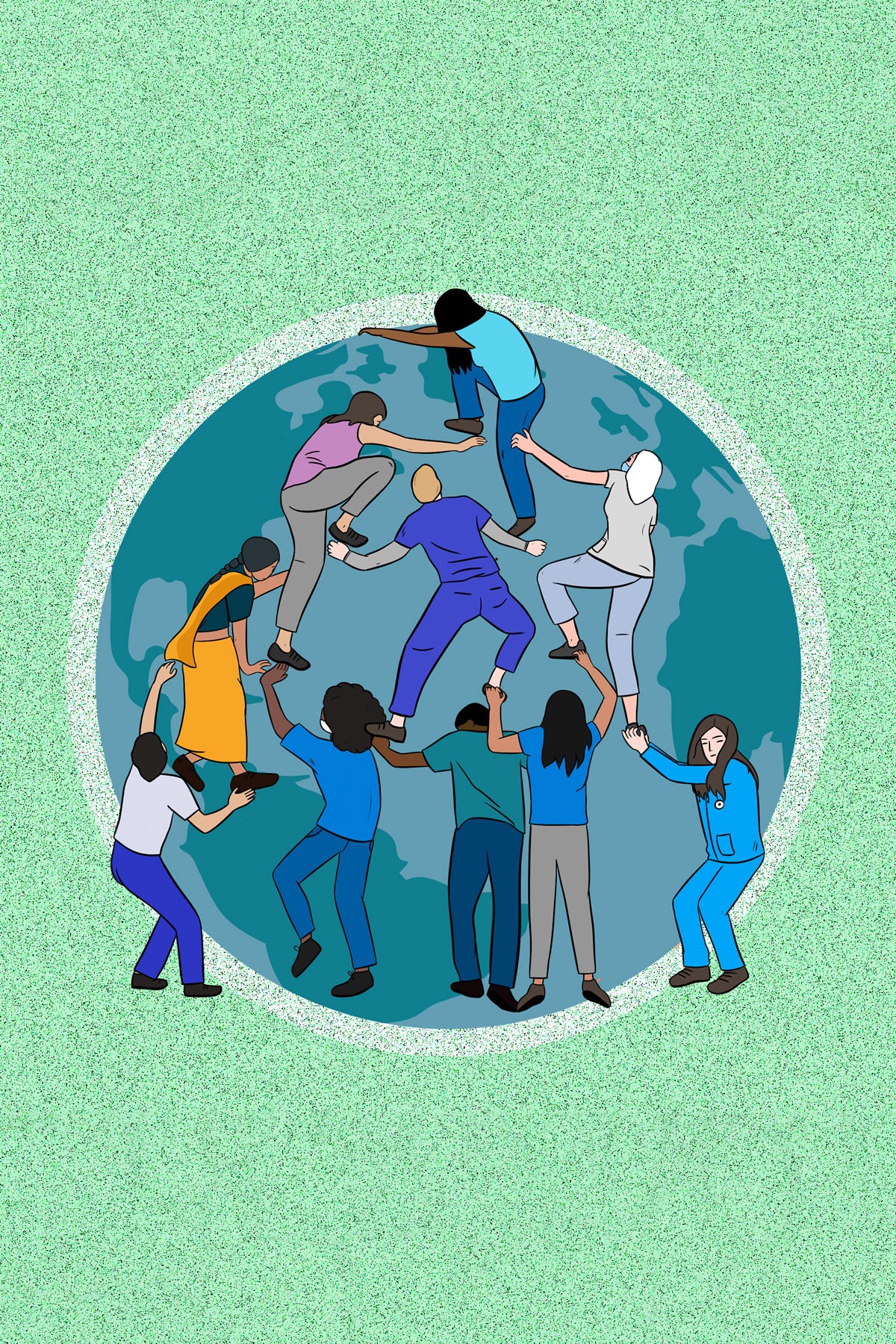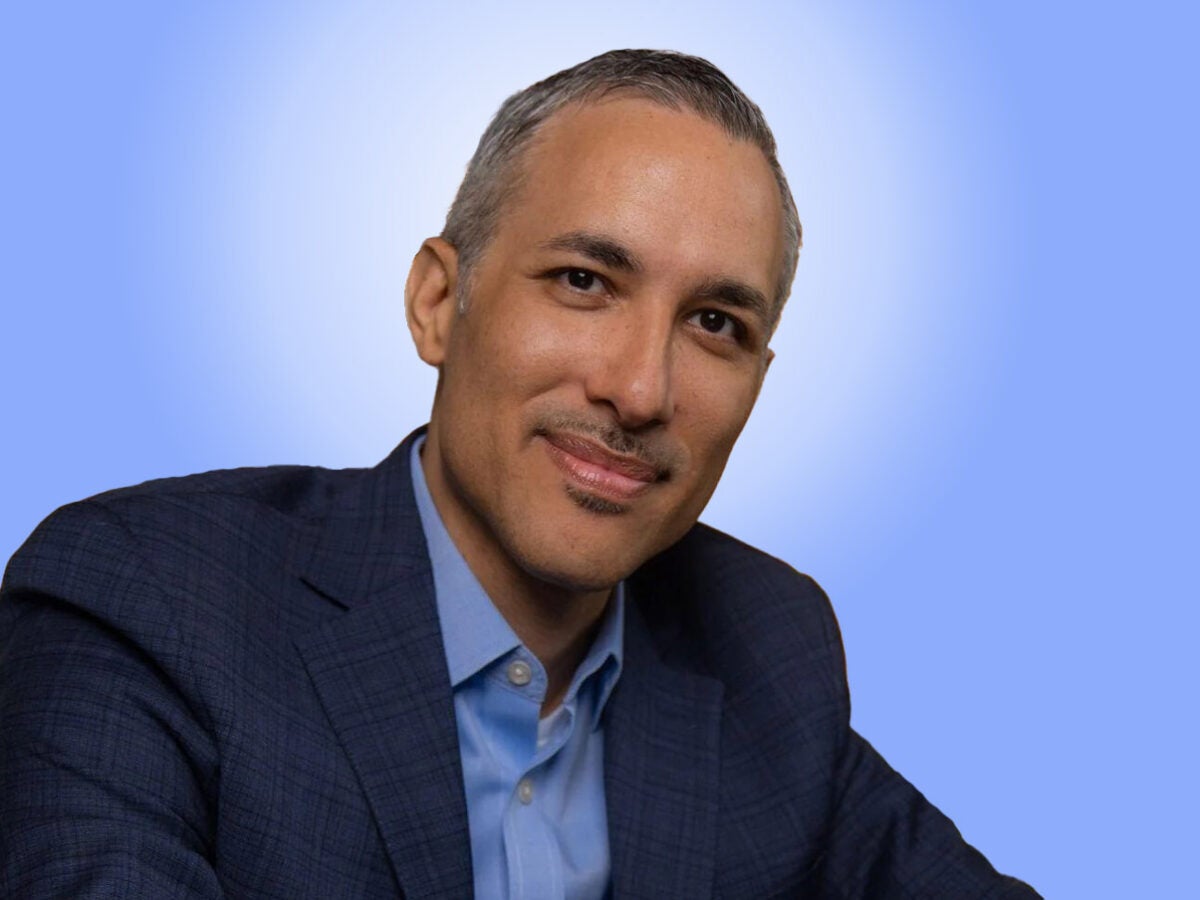
Opinion
Women in global health are the labor, but not leaders. Time’s up.
The global health sector is dominated by women—70 percent of the jobs are in women’s hands. And yet, a new report from Women in Global Health shows that women are drastically underrepresented in global health leadership, holding just 25 percent of the top jobs.
The report shows the default health worker is a woman, but the default health leader is a man. We call this the “XX Paradox.”
In a fair world, health leaders would be as diverse as the populations they represent. And in a fair world, women from the Global South would be equally represented in global leadership positions. But in our world, only one major global health organization, UNAIDS, is headed by a woman from a low-income country.
Our organization, Women in Global Health, assessed the state of women’s leadership in global health. At the global level, we looked at how many women held leadership positions at Fortune 500 health care companies, the World Health Assembly, 90 global health organizations, top public health and medical schools, and ministries or departments of health in every country. Women are underrepresented across the board.
Sign up for Harvard Public Health
Delivered to your inbox weekly.
Global health leadership, percent women

Courtesy of Women in Global Health, 2023
At the national level, we captured women’s experiences working in public health across three countries: India, Kenya, and Nigeria. In Kenya, for example, women hold 42 percent of mid-level positions, and 40 percent of top leadership positions across the private, public, and NGO sectors in health. In Nigeria, women hold only one third of leadership roles in health organizations, and just one of the 28 directors of federal medical centers are women. In India, women hold about 28 percent of leadership roles across national health organizations, but representation is very uneven with some organizations employing almost no women in leadership positions.
Health care is one of the largest and fastest growing economic sectors in nearly every country, employing 234 million people globally (an underestimate because official statistics do not include large numbers of unpaid community health workers). Health is one of the most important employment sectors for women. In many countries, the majority of nurses, midwives, pharmacists, dentists, and physicians under 40 years old are women.
When we examined women’s experiences in the health sectors in India, Kenya, and Nigeria, we found that women are consistently shut out from leadership roles for the same three reasons, even as they continue to make up the majority of the workforce in medicine and public health in these countries.
First, health jobs are gender segregated. Women health workers tend to be employed in roles given lower social value, status, and pay, like public health nursing and unpaid community health work. Men are the majority of surgeons, policymakers, and high-paying leadership roles.
For women in community health jobs, there is often no career path from unpaid work to formal, paid health jobs. The health sector suffers from particularly deep gender segregation as the result of the historic exclusion of women from studying and practicing medicine, alongside widespread and ongoing gender discrimination and bias within medicine and related health fields.
Second, gender norms often burden women with the majority of unpaid care work at home. On top of this, the “motherhood penalty” places major obstacles in the way of pregnant women and new mothers. Human resources policies are developed with men as the default, with women’s reproductive lives treated as an inconvenient aberration. These challenges are not unique to the health sector, but these obstacles are especially glaring in global health given the majority of workers are women. It makes little sense that workplace norms and policies should continue to be designed by and for men.
Third, systemic gender bias limits women’s opportunities through a lack of access to education, cultural restrictions, and even a failure to outlaw sexual harassment at work. Not to mention gender bias in hiring and pay. Women in global health earn 24 percent less on average than their male counterparts.
There was already a 10 million health worker shortage when the pandemic started, and now burned out health workers, mostly women, are leaving the profession. We cannot afford to lose them.
During the pandemic, women health workers were applauded for their exceptional contributions, but not rewarded. That must change.
There was already a 10 million health worker shortage when the pandemic started, and now burned out health workers, mostly women, are leaving the profession. We cannot afford to lose them.
Our collective failure to make sure women have a fair pathway to health leadership has denied women their rights, and denied health systems the expertise of millions of women working in global health.
Feasible policy solutions are out there. Women are asking for gender transformative policy measures that will unburden them from unpaid work at home, including childcare. The women we interviewed want policies that enable everyone to fulfill their potential at work.
Changing the status quo will require sustained action from all of us. Our key recommendations include:
- Create tailored leadership opportunities for women from marginalized backgrounds who may have missed out on formal education and other opportunities.
- Fast-track measures to correct the gender imbalance in global health leadership like committing to hiring or appointing women for empty leadership posts, especially posts that have never been held by women.
- Mobilize men to step up as allies and create more equal workplaces including normalizing paternity leave and other family-friendly policies that shift gender norms and more equally distribute the burden of unpaid work at home.
- Ending the ‘default man’ bias and prioritize accountability for policies that support women including: legal frameworks to ensure zero discrimination and harassment, flexible working options, and safe spaces for nursing mothers.
According to a recent UN report, it will take 140 years for women to achieve equal representation in leadership positions in the workplace. There is no reason for women in the health sector to wait that long.
Women are already shaping health in their countries and are ready to lead at the global level. More diverse women in global health leadership means potential gains for public health systems around the world, social change, and economic growth. Women can and should be leading global health. The work of undoing the XX Paradox must start now.
Source illustration: Women in Global Health, 2023


